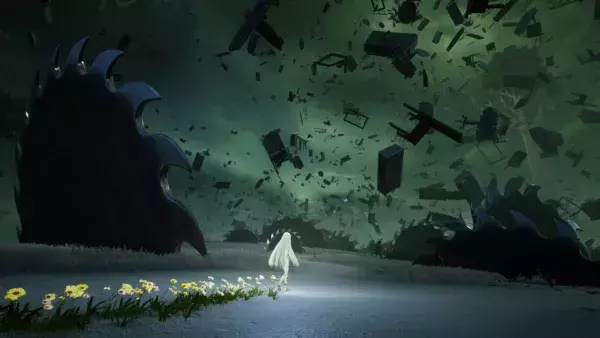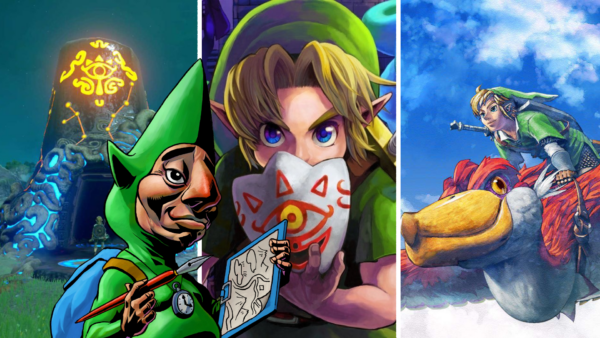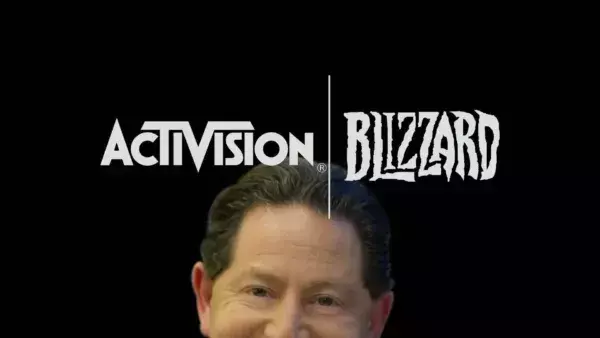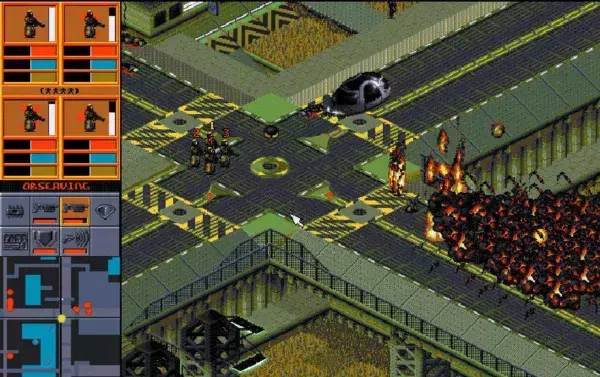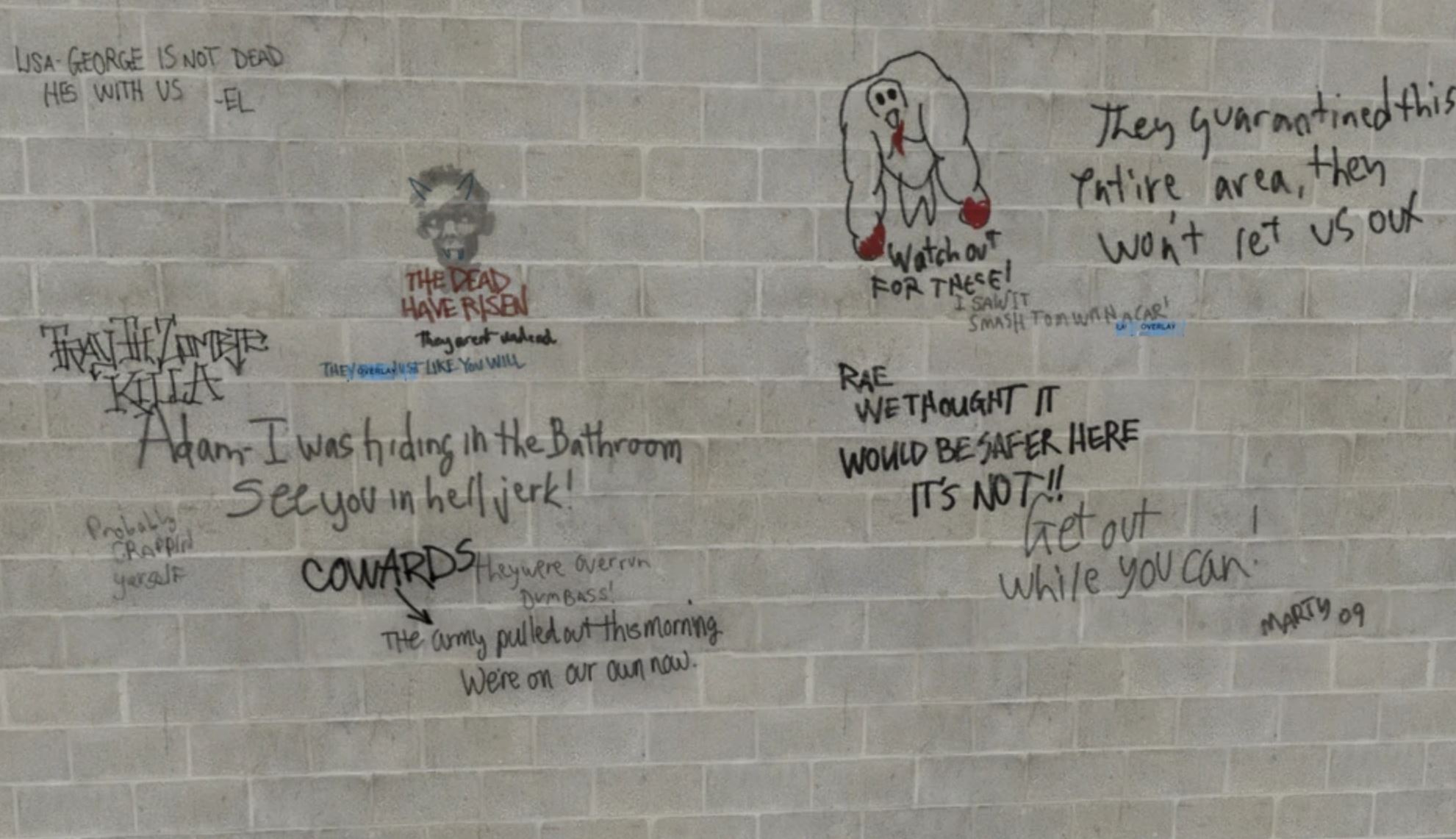
Graffiti is often used by game designers to enhance virtual worlds and even tell stories. Here’s how.
Whether a child got bored and wrote something naughty in the cement drying on the sidewalk or a graffiti artist decided to hone their skills on the side of a subway train, wherever people exist, so too does graffiti. Naturally, this means it should extend to the virtual worlds we build as well; after all, why wouldn’t a place with virtual humans also have virtual children or virtual artists existing as a part of it?
If the worlds we build are even remotely like our own, they’re frequently sites of conflict, upheaval, and socio-economic inequality; to this end, graffiti should be on the cultural frontlines of these battles. For a world-builder, graffiti becomes a useful tool for illustrating these struggles in the worlds we create. So while we know we’re inevitably going to have graffiti in our games, how exactly do we, as world-builders, actually go about doing that in a logical way that makes those worlds feel more believable?
What is ‘graffiti’?
To understand how to use graffiti in world design, we first need to understand what graffiti is as a form of art.

Graffiti is as old as time, with archaeologists discovering examples of crude carvings in bricks as far back as ancient Rome. Modern graffiti as we know it, however, was developed and innovated by the African-American community in the late 20th century and was rapidly adopted by other marginalised people as a means of growing community, self-expression, and resistance. Graffiti writing as a culture is a whole language and form of expression using similar artistic principles and stylings as graphic design. Graffiti can be broadly defined as public art that is created without sanction or approval by those in power.
Therefore, what most people consider to be ‘street art’ is not, and cannot be graffiti, as it’s often created with approval (and even funded) by those in power. When we discuss graffiti, this is an important distinction to make – graffiti is in direct opposition to what those in power want themselves or other people to be exposed to.
Location, location, location
Graffiti is also almost always about sending a message to an audience. A graffiti artist is painting overt obscenities (the message) on the front door of a government official’s home (the audience) or writing a tag (the message) to mark their territory in order to stave off other graffiti writers (the audience) are examples of this. When placing graffiti in virtual environments, this is a key point to remember when you’re looking for places for graffiti to live.
Empathy is key in placing graffiti in a world, then – since we’re not directly affected by the factors an artist faces (after all, we can just drag and drop graffiti wherever we want), we need to put ourselves in the shoes of the artist to understand the context of a graffiti’s application.

Ask yourself: does this piece of graffiti being placed here send the right message to the right audience? If I were a graffiti artist, would this location make the most sense for me to reach my audience? Does this piece send the right message, or would a different piece or different location suit the intention of the message or audience better? If we, as creators, can visualise and imagine how or why an artist might have gone about creating a piece in the world, then the player too will have an easier time buying into the world we’re creating.
The piece matters, too
The piece and the medium it’s made of is equally as important as the location of the piece itself. Some forms of graffiti art are faster and more accessible than others, and each has different strengths and weaknesses. Take, for example, a piece which is hand-painted with traditional brush-and-bucket painting techniques. This is going to be time- and resource-intensive, demanding that an artist bring all their painting supplies as well as take the time to mix and apply paints to create it – something only suitable for placement in more obscure areas which might afford the artist less chance of being apprehended while they apply it illegally.
Aerosol, however, excels at fast and lightweight application and is more suited to being placed in obvious, visible areas where an artist can spray and escape with ease. Mediums like stencils or wheatpaste, similarly, allow an artist to create the piece beforehand before applying it in the world, allowing more accurate results with less hassle. Each type of graffiti medium has different strengths and weaknesses that should be considered before placing them in the game world in order to maintain a logical consistency.
Where isn’t the graffiti?
It’s equally as important to consider where graffiti isn’t, and why that’s the case. Thanks to the stigma around graffiti, there’s a tendency to consider its presence as an indicator of crime or a dangerous population, when it’s more of a visual shorthand for systemic resource allocation. There’s a reason the financial district of most cities is well-maintained and rarely shows any signs of graffiti, while low-income or abandoned areas are covered in it: because those in power decided these areas aren’t deemed worth the investment of keeping it maintained.

So richer areas are well maintained. But how do they do that? The graffiti term for it is ‘buffing’, which basically means removing graffiti, typically by means of a pressure washer or repainting a surface. Buffing is usually undertaken by janitors, groundskeepers, or street cleaners and is usually poorly done, leaving behind patchy walls of new and old paint, or faint remains of the graffiti underneath. Buffed walls are powerful visual storytelling tools that are criminally under-used in games; their inclusion can reveal the history of the surface and illustrate to the player a struggle between cultures that might be occurring in areas around them. Where graffiti exists, so too do powers which want it to be gone forever, and putting effort into depicting that struggle is key to making virtual spaces and cultures feel in conflict and truly real.
If there was graffiti in a location that an oppressor had an interest in removing, signs that graffiti was there should remain. If we compare the virtual worlds we build to the real ones, they should equally have as many buffed walls, or at least remnants of graffiti, as real ones. From what I’ve observed, however, buffed walls are often used as an afterthought if they’re used at all – otherwise graffiti either exists or doesn’t, and the struggle between forces in virtual worlds remains much more muted when we take that approach to them. Push for more buffed walls in your worlds, because graffiti, like many elements of society and culture, doesn’t exist in the binary.
Graffiti is everywhere
Remember that graffiti writers aren’t exclusively lower-income folks, nor do people always create art exclusively in their own communities. Remember too that wherever there are people, graffiti is sure to follow, and the general public typically has little idea as to just how unhinged graffiti writers can be in pursuit of an opportunity to showcase their work. Many games will focus graffiti on the ground level of buildings and largely use it as an aesthetic device on areas players will most frequently inhabit and observe. In reality, graffiti deviates from this pattern aggressively – take a walk through any city and you’ll see numerous examples of graffiti on rooftops, fire escapes, billboards, and even on the sides of buildings. Graffiti artists aren’t limiting themselves to areas where people are most likely to tread; in fact, graffiti is often everywhere, and this should be consistent in the worlds we create.

In graffiti culture, hard-to-reach locations are incredibly desirable to writers. If you can tag a spot that’s hard to reach – especially if it’s highly visible – it shows other artists your bravado and skill. Officials will also have a harder time buffing locations that are harder or cost more resources to get access to, so a piece in a more difficult-to-reach spot will last for much longer than one on ground level. Graffiti writers will use rock climbing and pulley systems, breaking and entering, impersonating officials, swimming through bodies of water, and even bribery in order to secure access to obscure locations to create their works in new and unusual places.
If you, as a level designer or artist, need to find a place where graffiti “makes sense”, then I have good news for you – that place can be anywhere. There’s practically no limit! Keeping this in mind truly unlocks our use for using graffiti as a means to guide players and build on the story of our world in exciting and versatile ways. Graffiti never exists only in places where most people can see it, and neither should we adhere to these limitations in the worlds we create.
Telling a visual history
Graffiti is also a tool for depicting the visual history of a place – how people got here, what their thoughts and feelings were, what their ideals might have been, what happened to them or the space after they left – a type of virtual archaeology chronicling the spaces we create. Let’s embrace it as such.

When a graffiti artist creates, it’s rarely in a vacuum, and is usually influenced by the world around them. The location they choose is informed by how easy and safe it is to reach, and the distribution of the piece is influenced by how well-suited the wall is to being sprayed on; the piece just existing on the wall for long enough can prompt other pieces to appear, which might prompt authorities to crack down and buff that wall in particular or, alternatively, the space might be forgotten and the piece could be overrun by overgrowth. The entire growth and development of a space over time can be driven by graffiti; it’s a dynamic dance of factors that can be seen in the final product. When we place graffiti in our worlds, we need to consider the age of the space as a factor in how it appears, and how that history might come across to the viewer.
Drawing a line
There’s a lot of nuance to keep in mind when evaluating how we use graffiti in our games, but hopefully these tips can help inform your approach. Where there are people, there will always be graffiti, and the better we can understand and empathise with its creation (and its creators), the closer we can get to building virtual worlds that are as immersive and relatable to our own.


